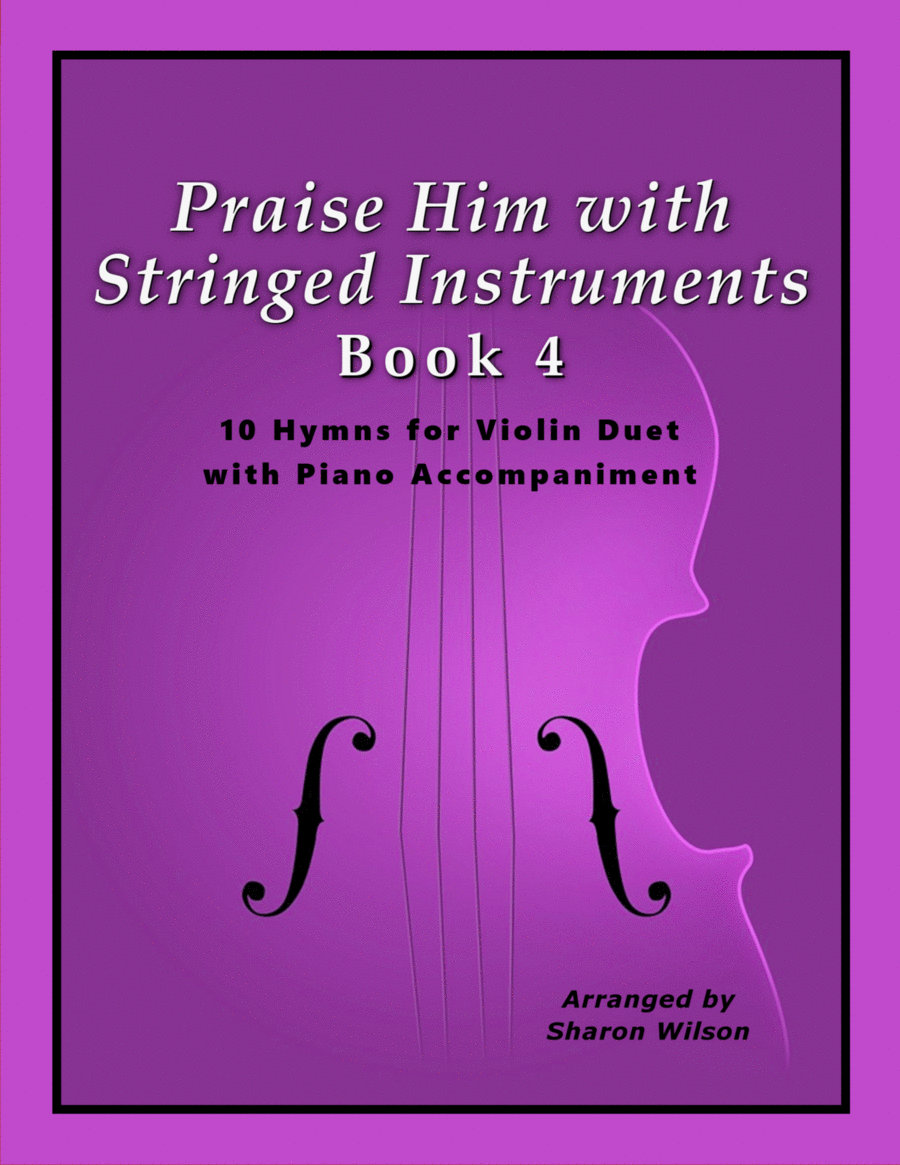Instrumental Duet,Piano Instrumental Duet,Piano,Violin - Level 2 - Digital Download SKU: A0.1362828 By Sharon Wilson. By Charles H. Gabriel, Charles Wesley, Chester G. Allen, Daniel B. Towner, Folk Song, James McGranahan, Oscar Ahnfelt, Thomas Campbell, Thomas J. Williams, William B. Bradbury, and William J. Kirkpatrick. Arranged by Sharon Wilson. Children,Christian,Easter,Folk,Sacred. 160 pages. Sharon Wilson #947208. Published by Sharon Wilson (A0.1362828). The title of this collection was inspired by the words found in Psalm 150 verse 4: Praise Him with stringed instruments. . . (KJV)This collection contains 10 favorite hymns arranged as instrumental trios (for two VIOLINS with PIANO accompaniment). These uplifting arrangements are a welcome addition to the repertoire for beginning string players and suitable for recitals or worship services throughout the year.  All notes for both VIOLIN parts are playable in the first position making these arrangements an excellent choice for early-intermediate string players. The PIANO accompaniment is written for an intermediate player.For each song, there is a combined score (grand staff) with all three parts on each page (VIOLIN 1, VIOLIN 2, and PIANO) plus separate 1-staff scores for each VIOLIN part as well as a PIANO only score.Each song is also available separately with accompanying preview pages and audio samples. Song titles included in this collection:   And Can It BeDay by DayI Will Sing of My RedeemerLord, I’m Coming HomeMarvelous GraceMy Savior’s LoveO the Deep, Deep Love of JesusPraise Him! Praise Him!Redeemed!There Is a FountainVisit Sharon Wilson's website: https://www.SharonWilsonMusic.com/Subscribe to her YouTube Channel: https://youtube.com/@SharonWilsonMusic
